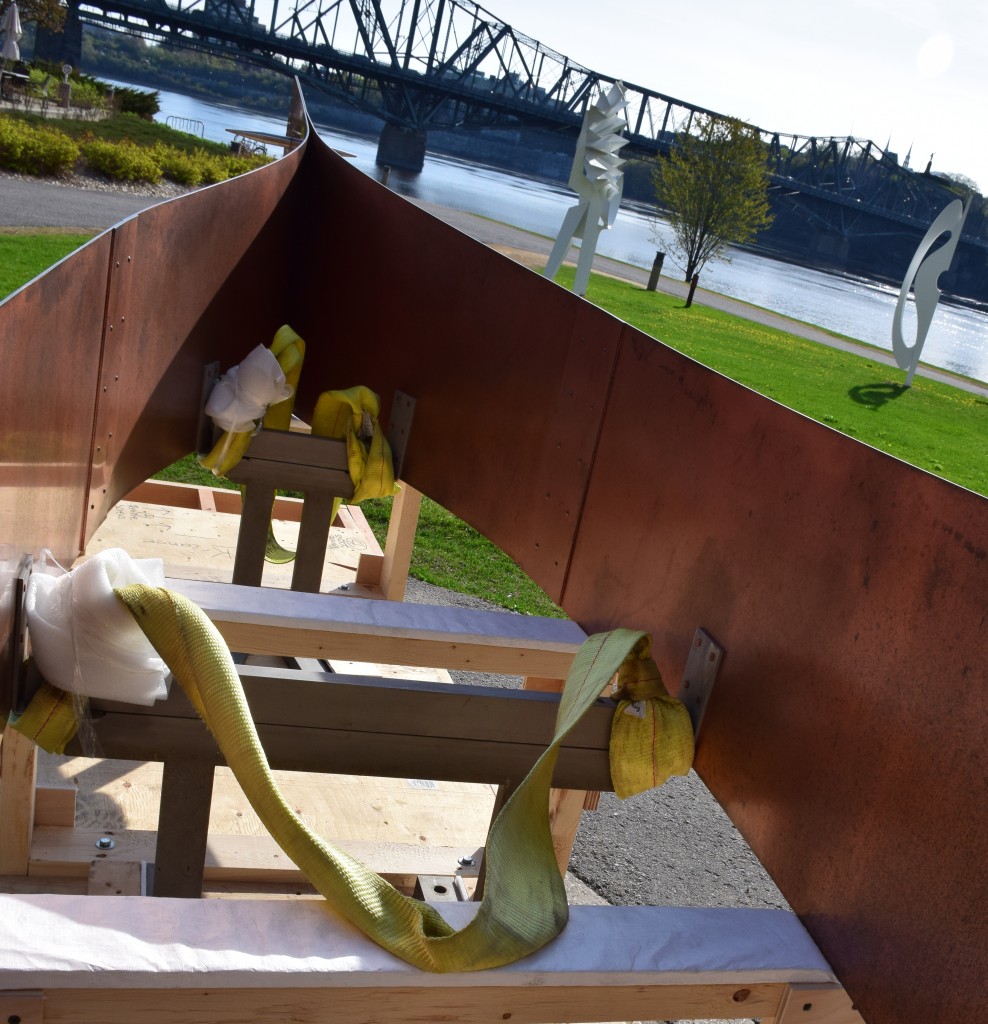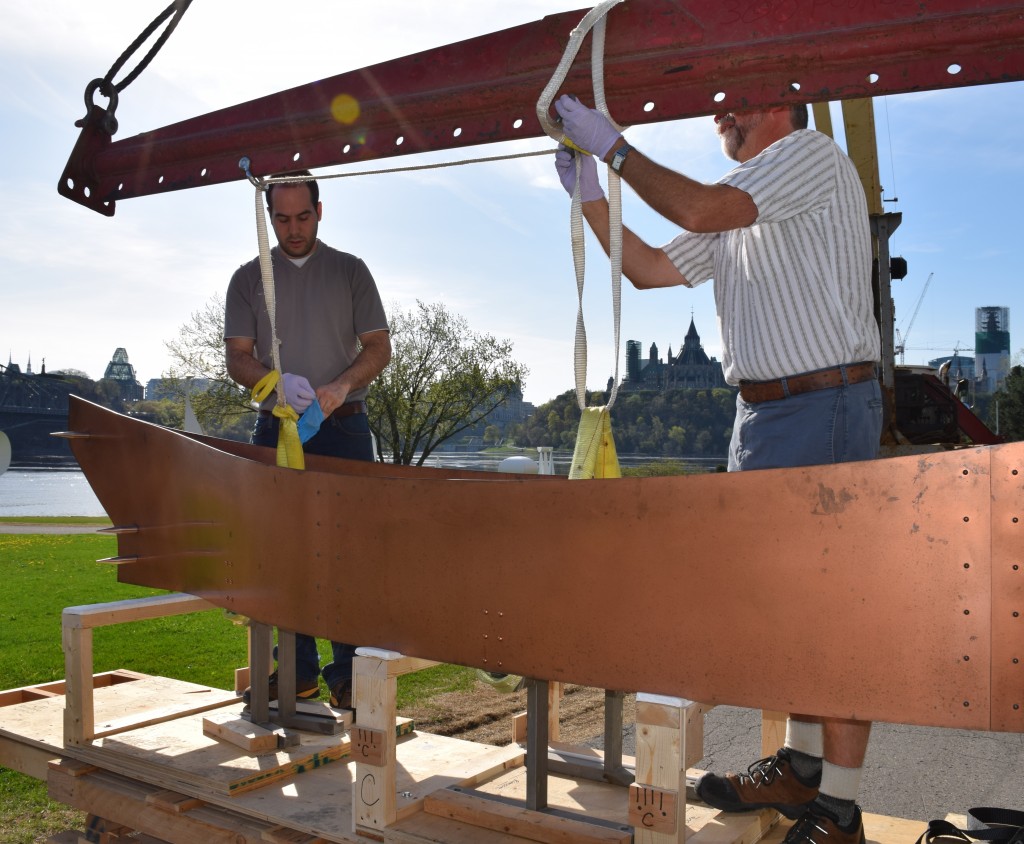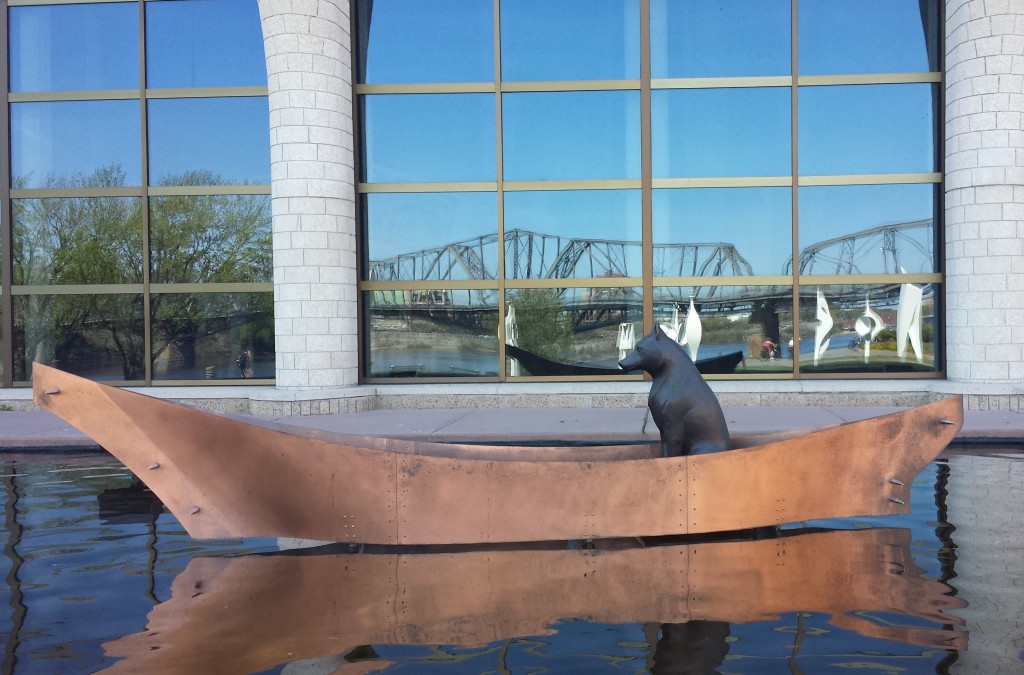Large Artifact, Small Space: Reassembling ‘namaxsala, a Task Requiring Precision and Patience
Mary Anne Barkhouse’s sculpture ‘namaxsala (To Travel in a Boat Together), is a striking work of art. Fittingly, it is displayed in one of the outdoor pools adjacent to the Grand Hall, the Museum’s exhibition on the history, cultures and beliefs of the First Peoples of Canada’s Pacific Coast. The sculpture takes the form of a large canoe, about 5 metres in length. It is made of copper sheet and stainless steel supports, and is somewhat fragile. The central part of the sculpture, the wolf, is a separate component that is mounted atop a granite and concrete column in the stern of the canoe. The canoe mount consists of a poured concrete base that sits among the river rock at the bottom of the pool.
We removed the canoe in late 2014 to attend to a minor issue involving the point of attachment of the legs to the canoe sides. The wolf, being a separate component, remained in situ over the winter awaiting the return of the canoe. In this blog post I’ll explain how we reunited the canoe and the wolf earlier this spring. In the image below, you can see the legs and supports at the stern and middle of the canoe, with lifting straps attached. The weight of the copper sides is borne by these two crosspieces, as well as a third one at the bow. During the lift, the load had to be distributed as equally as possible between these points to avoid stressing or deforming the copper. The lift also had to be done from directly overhead.

The stern and middle supports, with lifting straps attached.
I used a 3-metre lifting beam to ensure the safety of the artifact. In the image below, you can see two of us working on attaching a single lifting strap, running from the stern through a shackle directly above, through a second shackle and down to the middle support. This single strap allowed the weight of the canoe to be evenly distributed during the lift.  At this stage, I signalled the boom operator to raise the beam, which put slight tension on the strap. We then attached a third adjustable strap to the bow mount. It was now a relatively simple matter to ensure the same amount of tension on each strap. The entire unit was then raised and swung into position over the mount.
At this stage, I signalled the boom operator to raise the beam, which put slight tension on the strap. We then attached a third adjustable strap to the bow mount. It was now a relatively simple matter to ensure the same amount of tension on each strap. The entire unit was then raised and swung into position over the mount.

Preparing to reinstall the canoe portion of the sculpture.
Now for the hard part! The wolf fits tightly in the stern, with just over 1 cm of clearance between the stone base and the sides of the canoe. This meant that we needed to get the canoe perfectly aligned above the mount and wolf before we started to lower it. To do this as safely as possible, protecting both wolf and canoe, I wrapped the wolf in quilted padding. Once we lowered the canoe past the wolf, we needed to settle it evenly on the bolts securing the legs to the mount. We didn’t want one end to seat itself, while the other got hung up on the protruding bolts, as that might have caused the copper to buckle. Once the operation was completed successfully, we removed the straps, secured the canoe to the mount and refilled the pool with water. The canoe and wolf were now reunited.

‘namaxsala (To Travel in a Boat Together) by Mary Anne Barkhouse
To learn more about ‘namaxsala: historymuseum.ca/maryannebarkhouse